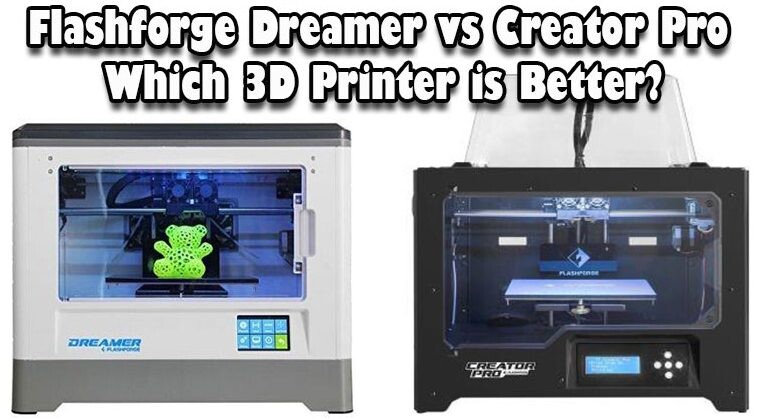Table of Contents
3D printers are truly amazing. Anything you imagine can be created in 3D and now with a variety of materials. Not only have the software and printing abilities advanced over the years, but the prices have also fallen. If you are the creative type, Flashforge has a fantastic range of 3D printers for you.
Today, we will be looking at the Flashforge Dreamer and the Flashforge Creator Pro. Both have been upgraded with the ultimate software and materials. Throughout this article, we will look at the specifics of the Flashforge Dreamer and the Flashforge Creator Pro, including their functions, use, and printing capabilities.
There are a few similarities that we will cover first.
Flashforge Dreamer vs Creator Pro
Printing Chamber
These two printers are enclosed. The enclosed chambers protect your 3D printing from outside elements like dust and dirt. The chamber also plays an important role in maintaining a consistant temperature during the process.
The Printing Plate
The Flashforge Dreamer and the Flashforge Creator Pro has aviation-level aluminum plates. These plates provide a perfectly flat surface and can withstand the high temperatures without warping. The plates are 6.3mm thick.
The Nozzle/Extruder
With the Flashforge Dreamer and the Flashforge Creator Pro, you will be able to print in 2 colors thanks to the dual nozzles. The nozzles are 0.4mm in diameter. The Creator Pro takes a filament diameter of 1.75mm. While there is no information about this with the Flashforge Dreamer, we can assume it is the same, as this is the standard diameter.
Warranty
A full warrant comes with both the Flashforge Dreamer and the Flashforge Creator Pro. The length of the warranty is unclear however they both also come with lifetime support.




Now that we have finished with the similarities, let’s move on to the differences between the Flashforge Dreamer and the Flashforge Creator Pro.
Differences Between Flashforge Dreamer and Creator Pro
Appearance
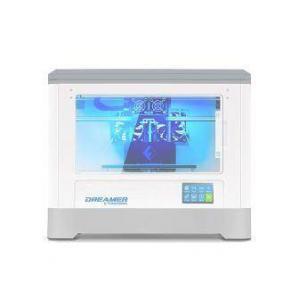
They look quite similar, and not very different to other 3D printers. You will see the mainframe and the printing axes. The difference boils down to the dimensions.
Flashforge Dreamer
This 3D printer has a high-end plastic alloy frame. It has LED lights for better visibility. It weighs 24.3 pounds. It is 19.1 x 13.2 x 15.8 inches.
Flashforge Creator Pro
The frame of the Creator Pro is made of metal with an acrylic cover. It also has LED lights. It weighs a fraction less at 24.2 pounds. It is 17 x 19 x 22 inches.
The Winner Is- A Tie
The Screen
How you control a 3D printer is often down to personal preference. Some machines have turn knobs, others have keypads, and some have touchscreens.
Flashforge Dreamer
You will be able to use a 3.5 inch HD IPS touchscreen to control the Flashforge Dreamer 3D printer.
Flashforge Creator Pro
The system appears to be less modern yet functions equally well. There is an LCD screen with a button board.
The Winner Is- The Flashforge Dreamer
Read next: Anet A6 vs Anet A8: Which 3D Printer is Better?
Build Volume
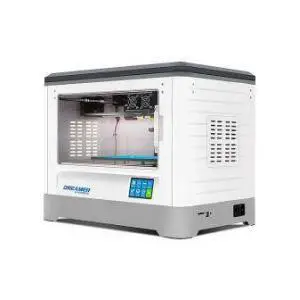
This determines the size of the projects you are able to build. Remember, a bigger printer doesn’t necessarily mean a larger printing volume, so it’s important to check these numbers.
Flashforge Dreamer
You will be able to create 3D prints with a maximum size of 230 x 150 x 140 millimeters.
Flashforge Creator Pro
The building volume is very slightly different and probably not enough to notice. It is 227 x 1498 x 150 millimeters.
The Winner Is- A Tie
Read next: Creality Ender 3 vs CR 10: Which 3D Printer is Better?
Printing Specifications
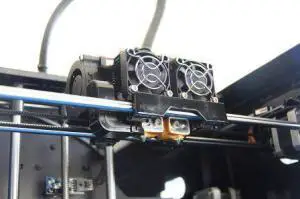
Nowadays, 3D printers are fast, accurate and able to print with great detail.
Flashforge Dreamer
This has a layer resolution of 0.1-0.4mm. It has a printing speed of 10-100mm. There is no information on the accuracy of the axes.
Flashforge Creator Pro
The layer resolution is 0.1-0.3mm. The printing speed information is not available. The XY axis has an accuracy of 0.0004 inches. The Z-axis has an accuracy of 0.0001 inches.
The Winner Is- A Tie
Materials for Printing
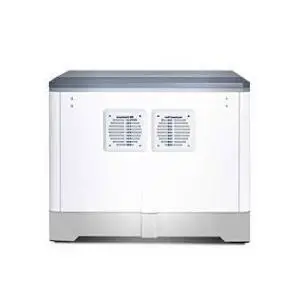
When investing decent amounts of money in a 3D printer, you want to make sure you are able to use a number of filament materials.
Flashforge Dreamer
You can use ABS, PLA, PVA, TPU 95A, and PETG
Flashforge Creator Pro
There is a huge range of materials you can use: ABS, PLA, PLA color change, Pearl, ABD Pro, Elastic, PVA, HIPS, PETG, TPE, TPU, Conductive filament, flexible filled filament, metal filled filament, wood filled filament, and PP.
The Winner Is- The Flashforge Creator Pro
Software
We all know that the software of any device makes a great difference in how easily you can use it.
Flashforge Dreamer
It comes with an SD card that contains FlashPrint, a self-developed software. The Flashforge Dreamer is also compatible with Slic3r and Skein forge.
Flashforge Creator Pro
You will also receive FashPrint on an SD card. It is compatible with Replicator G.
The Winner Is- The Flashforge Dreamer
Operating Systems
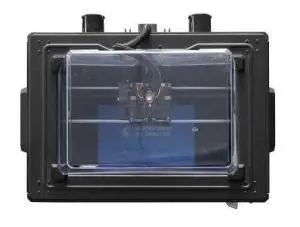
It is crucial that your 3D printer is compatible with the operating system you use. With regards to Windows. It is worth contacting the seller to ensure it is compatible with the latest Windows operating systems.
Flashforge Dreamer
It is compatible with Windows XP, Windows 7, and Windows 8. You can also run it with Mac OS but not Linux.
Flashforge Creator Pro
It is compatible with Windows Mac OSX, and Linux.
The Winner Is- The Flashforge Creator Pro
Accessories
When you buy a 3D printer, you will probably want to get it up and running as soon as possible, so it’s important that you have all that you need in the box.
Flashforge Dreamer
Aside from the Flashforge Dreamer 3D printer, the box includes 2 spools of filament (0.6g of ABS and 0.6g of PLA), a USB cable, a power cord, a tool kit, and a 4GB SD card.
Flashforge Creator Pro
This box is more like Mary Poppins’ handbag! There is the Creator Pro 3D printer, a dual extruder, 2 spool holders, 2 spools of filament (each one kilo and the colors vary), 2 spare blue platform stickers, 2 filament guide tubes, a tool kit, an extruder accessory kit, a power cord, a USB cable, an injected PC top cover, and a 16GB SD card.
The Winner Is- The Flashforge Creator Pro
Pros and Cons
As the differences are so subtle, the following pros and cons will help with deciding between the Flashforge Dreamer and the Flashforge Creator Pro.
Flashforge Dreamer

Pros:
- It is WiFi compatible
- It doesn’t take long to perfect your 3D printing skills
- Fantastic printing results with all types of filament
Cons:
- The two nozzles aren’t the same height and can cause issues with printing
Flashforge Creator Pro
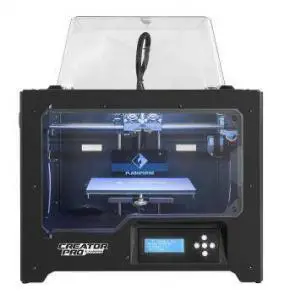
Pros:
- Excellent machine for those who aren’t tech-savvy
- It’s easy to assemble
- It’s open-source, which means if you are looking to upgrade or make adjustments to the 3D printer, you can do so yourself.
Cons:
- You will need some patience when it comes to balancing the table
The Final Verdict
Today’s winner is the Flashforge Creator Pro. That being said, there is absolutely nothing wrong with the Flashforge Dreamer, in fact, it is cheaper and many will appreciate being able to use WiFi.
The size and overall appearance of the Flashforge Dreamer and Flashforge Creator Pro were too similar to make a difference for us. We also found that the specifications, such as the build volume, were also not enough to affect our decision.
After testing both, we found that they were relatively easy to set up and with the help of the instructions, neither 3D printer took us long to get the desired results.
Although the Flashforge Creator Pro is more expensive, we very much appreciated the massive range of filament material that could be used. We found that this expanded the options we had when creating our projects. It is also advantageous that it is compatible with Linux. You will receive a load of accessories and the SD card which has much more storage. For those people who are more experienced, you will be able to print 3D parts to upgrade and modify your Flashforge Creator Pro 3D printer.
Last update on 2024-03-31 / Affiliate links / Images from Amazon Product Advertising API
